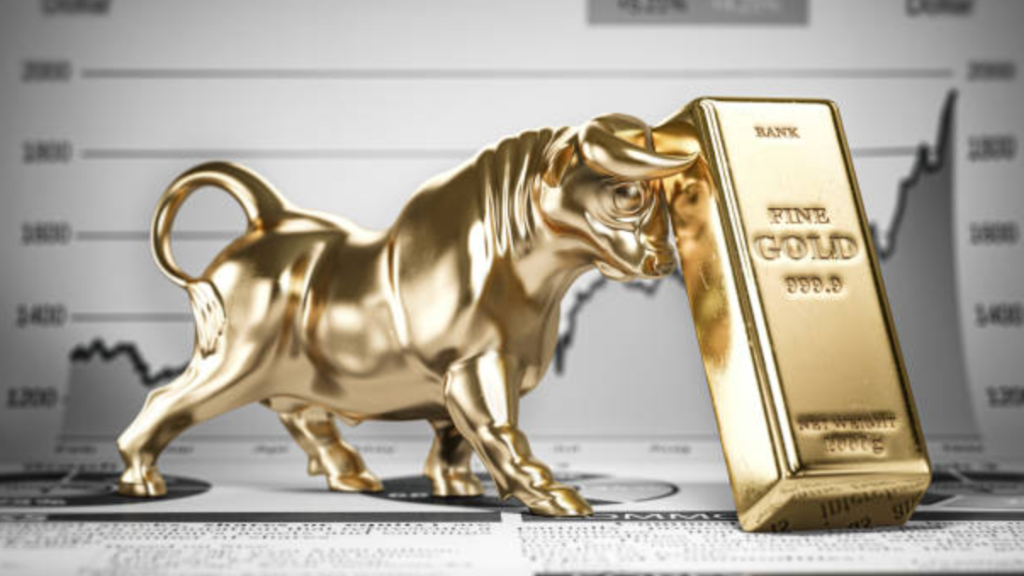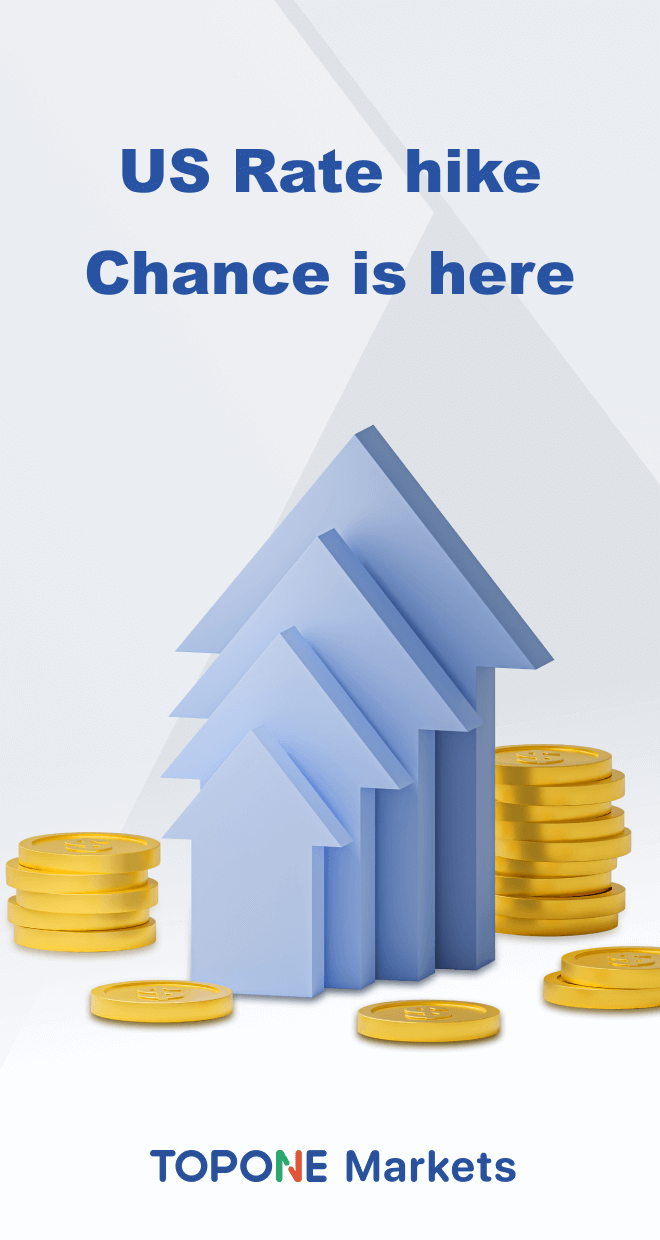
Gold is the premier safe-haven asset. Gold serves as a store of value over the long term, even though it may be too volatile in the short term to consistently avoid inflation. Humans have been drawn to this dazzling metal as a measure of wealth and a basis for various currencies since prehistoric times. Gold protects investors from geopolitical and socioeconomic upheavals, and nation-states continue seeking it to boost their currency reserves. Gold also has a low correlation with both equities and bonds, which gives a significant diversification benefit in increasing interest rate conditions when stocks and bonds decline in tandem. The S&P 500 has lost 16.9% year through July 20, whereas gold has only dropped by 7%. In 2022, these seven gold exchange-traded funds (ETFs) will be available to investors seeking cost-effective gold portfolio holdings.
Table of Contents
What are Gold ETFs?
Gold ETFs are exchange-traded funds that expose investors to gold without the need to purchase, store, and resell the precious metal themselves. Some gold ETFs monitor the price of gold directly, while others invest in gold-mining companies.
As with other ETFs, the issuing corporation purchases shares of gold-related companies or buys and keeps gold bullion. Investors purchase shares in the fund, the value of which grows and decreases in tandem with the underlying gold price or firm stock price.
Gold is considered a safe investment since its price tends to rise when stock markets fall. After the Great Recession, gold prices rose to nearly $1,900 per ounce in September 2011. The cost of gold has been approaching the prior high in recent months.
How to Select Gold ETFs
As with any other sort of investment, the process of selecting the best gold ETF for an investor’s needs may begin with the use of an ETF screener. The following are examples of selection criteria that investors might use to evaluate gold ETFs:
Performance
The primary selection criterion for analyzing the success of our list of gold ETFs is the 1-year return. Therefore, the three gold ETFs included in our list have the three highest 1-year returns through January 31, 2022. Before picking an ETF for a portfolio, investors may examine lengthier periods, such as three-, five-, and ten-year returns.
Expenses
The ETF with the lowest expense ratio will often outperform those that track the same index or commodity. The gold ETFs on our list offer lower expense ratios than other gold-tracking ETFs.
Structure
Many gold ETFs are formed as grantor trusts, whereas most ETFs that track a stock index is structured as open-end rather than closed-end funds. This is a slight but significant distinction.
Objective
To be included on the list of the top gold ETFs, only ETFs that strive to track the price of gold, net of fees, are evaluated. This list excludes other gold ETF aims and strategies, such as gold mining, inverse, and leveraged ETFs.
Investment Holdings
Instead of holding stocks or bonds, gold ETFs that track the price of the metal may own gold bullion or assets backed by the metal.
Quantitative Scores and Factor Marks
The Quant Ratings and Factor Grades of Seeking Alpha can be used to evaluate equities and ETFs. This article provides Factor Grades, which evaluate ETFs based on five “factors”: Momentum, Expenses, Dividends, Risk, and Asset Flows. To accomplish this, we compare the relevant data for the factor in issue for the ETF to the same metrics for other ETFs within the same asset class. The factor is then given a letter grade ranging from A+ to F.
What are the Two Types of Gold ETFs?
On the gold market, there are two distinct forms of exchange-traded funds:
- Physical gold exchange-traded funds aim to match the price and performance of bullion. Depending on the fund, these can be calculated in various methods, but they differ from exchange-traded commodities (ETC).
- The objective of stock or business ETFs is to mirror the performance of an index comprised of gold-related firm stocks, including those involved in the mining, extraction, or manufacture of the metal.
Consider These Top 10 Gold ETFs for Your Portfolio
1. Gold SPDR Shares (GLD)
GLD is the world’s largest and most liquid gold fund with physical holdings. Since its 2004 debut on the New York Stock Exchange, GLD has attracted $55.6 billion in assets under management, or AUM, equivalent to more than 32 million ounces of gold bullion held in trust. Purchasing a share in GLD represents a fractional, undivided ownership interest in a proportional portion of the horde. Unlike purchasing physical bullion, GLD is not affected by storage, insurance, or big bid-ask spreads, making it a simple and inexpensive option to obtain exposure to gold. Due to GLD’s size and liquidity, trading in this ETF has become extremely popular, with a well-developed options chain. Holding GLD incurs an annual expense ratio of 0.40% or $40 on a $10,000 investment.
2. iShares Gold Trust (IAU)
Similar to GLD, iShares Gold Trust provides direct exposure to the intraday price fluctuations of gold bullion. It is smaller than the SPDR fund, with $32 billion in total assets, and it was established in 2005, yet it is nearly a mirror image of the SPDR fund. The annual expenses of IAU are only 0.25 percent, which is a significant cost advantage. With $10,000 invested, this yields a yearly savings of about $15.IAU has a 10-year annual return of 1.49 percent, slightly higher than rival GLD’s return of 1.34 percent during the same period.
3. Aberdeen Standard Physical Gold Shares ETF (SGOL)
Aberdeen Standard Gold ETF Trust issues Aberdeen Standard Physical Gold Shares. Similar to other physical gold-backed exchange-traded funds (ETFs), SGOL reflects the performance of the price of gold bullion minus expenditures. SGOL has an inexpensive expense ratio of 0.17 percent. This Aberdeen fund is somewhat younger than its peers, having been established in 2009, and it also has fewer assets, totaling approximately $2.7 billion. To provide investors with transparent information about the SGOL fund’s composition, any modifications to the fund are promptly reported on the website. Bullion bars of gold are stored in vaults worldwide, including in Zurich and London. A bar list is released daily for investor reference on the Aberdeen website.
4. GraniteShares Gold Trust (BAR)
BAR is highly comparable to SGOL. Both ETFs hold LBMA gold bars in London vaults, are examined twice a year (with one inspection being random) and have an expense ratio of 0.17 percent. The difference is that BAR’s fund manager is more transparent.
GraniteShares discloses daily on the ETF’s website a comprehensive list of gold bars held by BAR. This list details the serial number, country of origin, purity, weight, packing ID, quantity, and current location of each gold bar stored. This may benefit investors who wish to be more active with their gold holdings and have confidence in the underlying asset.
5. Global X Gold Explorers ETF (GOEX)
As implied by its name, Global X Gold Explorers ETF gives gold investors access to companies engaged in gold exploration. Hecla Mining Co. (HL), a gold and silver producer, and Merdeka, a copper and gold miner that prides itself on sustainability and community development, are two of GOEX’s 49 holdings. SSR Mining, which produces gold, silver, tin, and zinc, is also one of the fund’s most significant holdings. The fund’s expense ratio is 0.65%, and its asset base is $55 million. Unlike other gold ETFs on the list, GOEX allocates 2% of its portfolio to the information technology sector and invests in companies located worldwide, providing the fund with inherent diversification. Most of its gold-mining holdings are located in Canada, although the company also operates in Australia, the United Kingdom, Indonesia, China, and South Africa.
6. ProShares Ultra Gold (UGL)
Investors seeking to trade gold frequently may seek leveraged exposure to magnify profits (which can also magnify losses). Alternatives to margin, gold futures, and GLD options include leveraged ETFs such as UGL. UGL aims for a daily return double that of its underlying benchmark, the Bloomberg Gold Subindex. The ETF accomplishes this by utilizing swaps, complicated derivatives held with significant third-party U.S. investment banks, and cash collateral for gold futures contracts. UGL is volatile and should not be held for longer than one day. Compounding returns (and losses) might generate results that deviate from the two-times-daily leverage target over time. Additionally, UGL is relatively expensive, having an expense ratio of 0.95 percent.
7. WisdomTree Efficient Gold Plus Equity Strategy Fund (GDE)
Adding gold to a portfolio frequently results in a reduction of allocations to other assets. Investors must cut their allocations to stocks and bonds to make room for gold, which can reduce total returns. GDE resolves this by utilizing gold futures in inventive ways. For each $100 invested in the ETF, $90 is allocated to 500 large-cap U.S. stocks, and $10 is invested in U.S. Treasuries, which serve as collateral for gold futures contracts. The leverage provided by these gold futures multiplies the $10 collateral into a gold exposure worth $90. The ultimate result is a novel 1.8-times leveraged portfolio consisting of 90% stocks and 90% gold. In contrast to most leveraged ETFs, GDE is designed for long-term investment because the leverage is not reset daily. The ETF is also relatively inexpensive, with a cost ratio of 0.20 percent.
8. VanEck Merk Gold Trust
The VanEck exchange-traded fund is a unique and highly liquid investment that gives investors the chance to exchange their shares for actual gold bullion. The investor may change the allotted London Bars into coins or bullion to facilitate delivery. However, this is not a taxable event. This ETF may be helpful for those who wish to own the actual asset but need a more convenient and economical method of acquisition and ownership.
9. Sprott Gold Miners ETF
The Sprott Gold Miners fund seeks to mimic the performance of the Solactive Gold Miners Custom Factors Index, its underlying index. This index tracks over 30 large-cap mining firms listed on major U.S. and Canadian exchanges. The index consists of companies with the highest revenue growth, free cash flow yield, and lowest long-term debt to equity ratio. It is rebalanced quarterly to reflect updated statistics and performance.
10. SPDR Gold MiniShares (GLDM)
State Street introduced GLDM as an alternative to GLD in 2018. The primary distinction between the two is that GLDM contains less gold than GLD, and GLDM has a lower expense ratio than GLD, at 0.18% against 0.4%. The MiniShares offering is smaller and less expensive, which may make it more appealing to ordinary investors seeking an inexpensive option to gain gold exposure. Similar to GLD and IAU, GLDM is designed to mirror the performance of the price of gold bullion minus expenditures. Since its market debut, GLDM has moved in lockstep with other gold ETFs.
Why Should We Invest in Gold?
Gold is essentially uncorrelated with both stocks and bonds. Therefore it provides a short-term diversification benefit to reduce portfolio volatility and risk, which may appeal to risk-averse investors or retirees.
Although it is arguable if gold is an effective inflation hedge, it appears to be positively connected with a depreciating currency. It can therefore be utilized as a store of value. The metal is also seen as a “haven” during political turmoil and instability; it is known as the “crisis commodity.” Numerous prominent passive portfolios, such as the All Weather Portfolio, the Golden Butterfly Portfolio, and the Permanent Portfolio, contain significant amounts of gold.
Remember that gold is a highly volatile asset; you need only a pinch in your asset allocation for it to have the desired effect. We would not invest more than 10% of our money in gold.
Because these ETFs are backed by gold bullion, they track the price of gold dependably while eliminating the risks associated with futures contracts. Considering that most of these funds track the same index – the spot price of gold bullion – it is generally best to select the one with the lowest fee ratio.
Gold ETFs FAQs
What exactly is an exchange-traded gold commodity?
The performance of a gold exchange-traded commodity (ETC) is based on the precious metal’s spot or future price. This varies from a gold ETF, which, per UCITS criteria, must comprise multiple components for diversification purposes.
How are taxed Gold ETFs?
When held in a taxable account, physical gold and commodity ETFs are typically taxed at a long-term capital gains rate of 28%. In contrast, when held for longer than a year, stock ETFs are subjected to capital gains tax rates of 0%, 15%, or 20%, based on the investor’s taxable income.
Should You Invest in Physical Gold or ETFs?
Many investors favor gold exchange-traded funds because they do not have to worry about moving and storing the metal, which can be challenging. Nonetheless, gold is viewed as a haven investment inside the financial markets. Thus, this method will appear profitable to some investors due to the high return potential.
Is Now the Time to Invest in Gold ETFs?
Gold is an attractive investment at all times of the year, whether the financial markets are bullish or bearish. This is because the metal performs well even during global recessions and rarely loses value. As the metal prices rise, the price of gold stocks and exchange-traded funds also increases. These can also protect against inflation when prices begin to rise.
Final Reflections
Gold ETFs aim to replicate the price movement of gold with fewer transaction costs. Gold ETFs offer indirect exposure to the price of gold. Therefore gold ETF shareholders do not take physical custody of the metal. Gold has historically served as a dependable store of value, despite its price being subject to severe short-term fluctuations.




